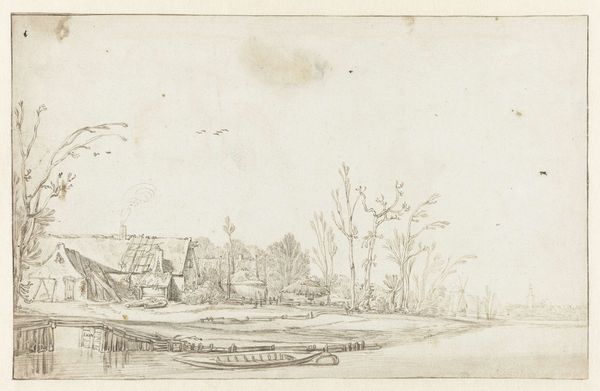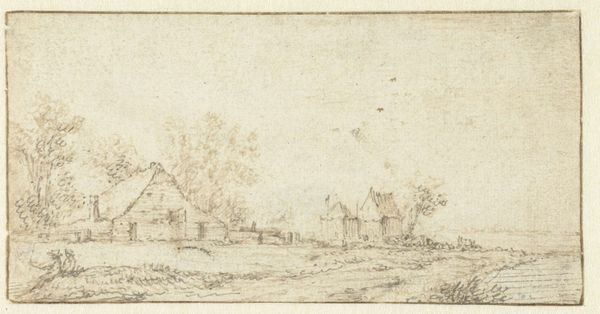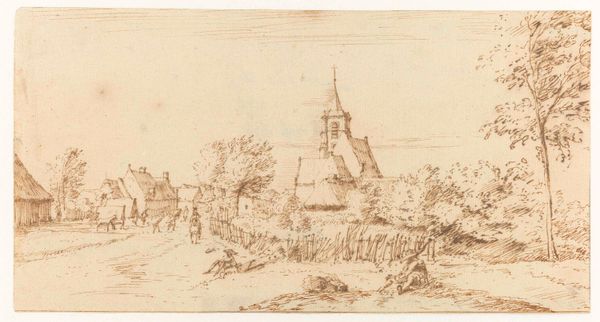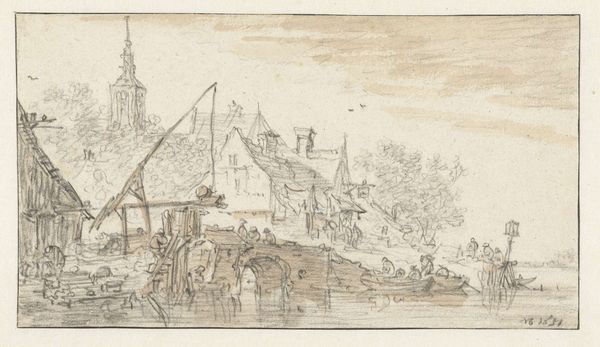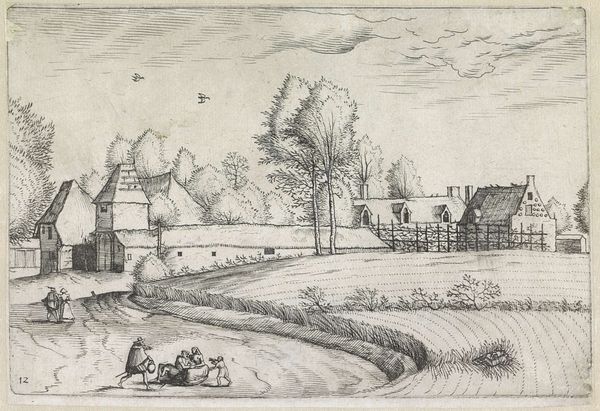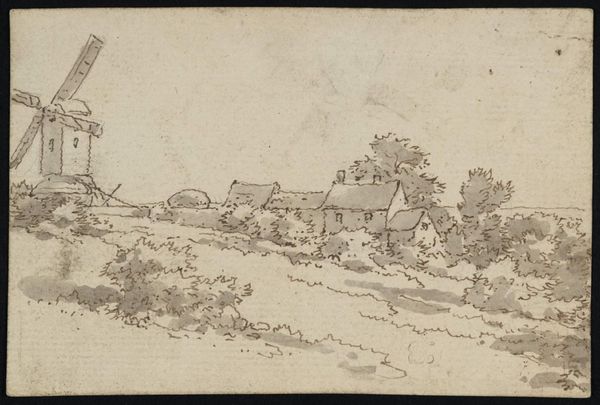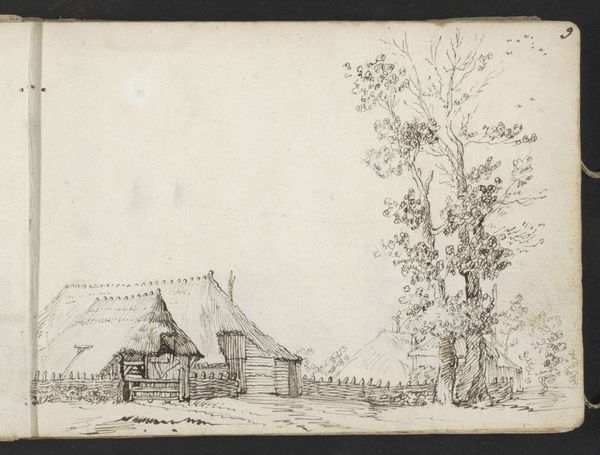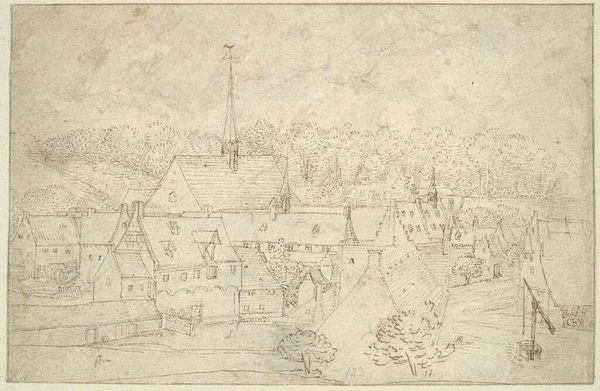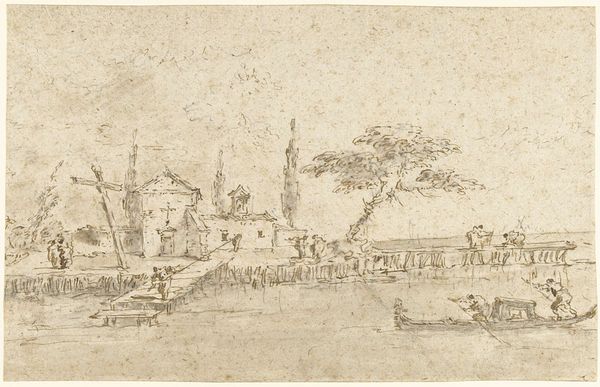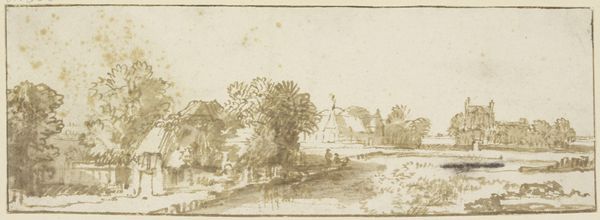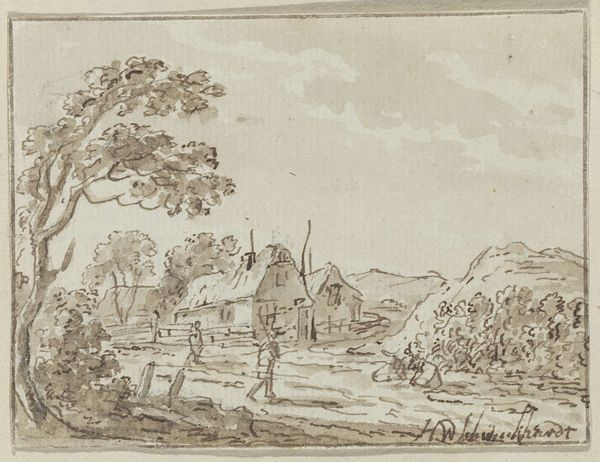
drawing, paper, ink
#
drawing
#
toned paper
#
light pencil work
#
quirky sketch
#
dutch-golden-age
#
pen sketch
#
pencil sketch
#
landscape
#
paper
#
personal sketchbook
#
ink
#
sketchwork
#
pen-ink sketch
#
sketchbook drawing
#
genre-painting
#
sketchbook art
Dimensions: height 127 mm, width 190 mm
Copyright: Rijks Museum: Open Domain
Curator: Ah, this little drawing...it’s all dreamy sepia tones to me! Like a forgotten postcard from someone’s peaceful countryside escape. Editor: Indeed. What we're seeing is "The Road to Leiden Outside Haarlem" created around 1607 by Claes Jansz. Visscher. The medium is ink on paper, and it's currently held at the Rijksmuseum. Curator: Visscher, wasn't he the map guy? Suddenly all those fields look like cartography... Makes me wonder, was he just doodling on a slow day, or planning some grand real estate venture? Editor: Visscher’s work reveals a moment in Dutch history when landscape art became increasingly intertwined with notions of national identity and the burgeoning mercantile class. Land ownership meant economic and political power. Curator: Sure, there’s definitely a sense of ‘ownership’ in that sturdy farmhouse he sketches! But honestly, it’s the delicate, almost haphazard sky that gets me. Scribbled clouds – as if he jotted them down real quick. It feels spontaneous. Editor: Note how the road itself leads our eye strategically. The positioning isn't just scenic—it invites us into the heart of a rural economy, implicating viewers in the systems that depended on peasant labor and trade. Think about the labor divisions inherent to maintaining these landscapes that only wealthy landowners benefitted from. Curator: That makes me think… these windmills, for example; the period had an absolute obsession with them. Grinding grain, draining water…it's almost as though he's whispering about this "golden age", and all that grinding ambition beneath the surface! Editor: Windmills were vital elements in land reclamation. These scenes often omit any representation of the colonial project happening abroad. These carefully rendered idyllic vistas contributed to constructing an idealized image of Holland at a time when the Dutch Republic’s global footprint had real material and cultural consequences in colonized lands. Curator: So, these quaint scenes… are masking bigger sins? All feels much more melancholic now. Editor: Perhaps not "masking", but complicating the view. Art often gives us not what "is" but what society wishes to see, and the act of acknowledging it can make for richer engagements with art history and contemporary cultural criticism. Curator: Absolutely. Looking through that lens just deepens the whole experience; makes this innocuous little sketch explode! It just confirms, art really talks to us in so many complex voices. Editor: Yes, voices across time.
Comments
No comments
Be the first to comment and join the conversation on the ultimate creative platform.
